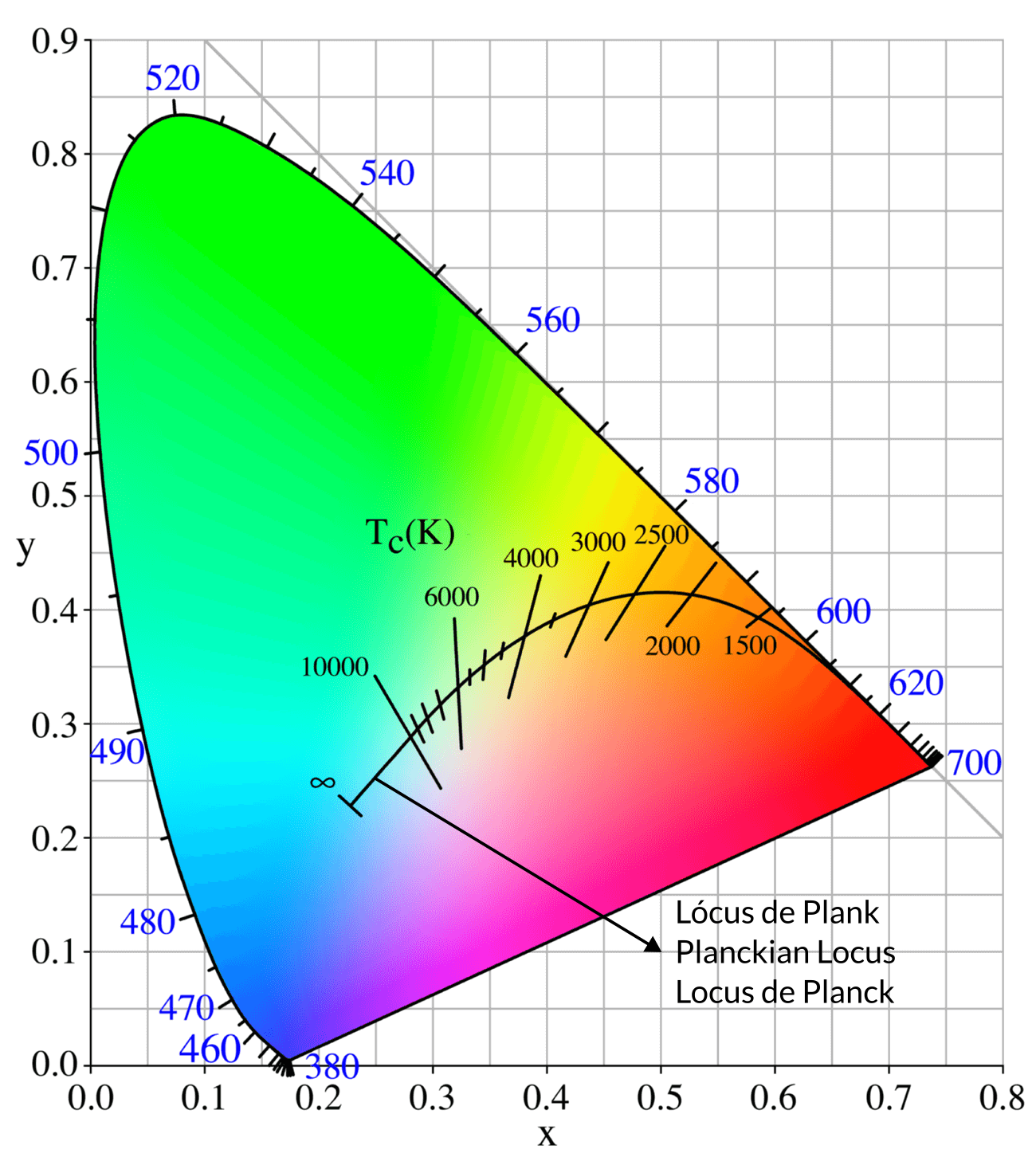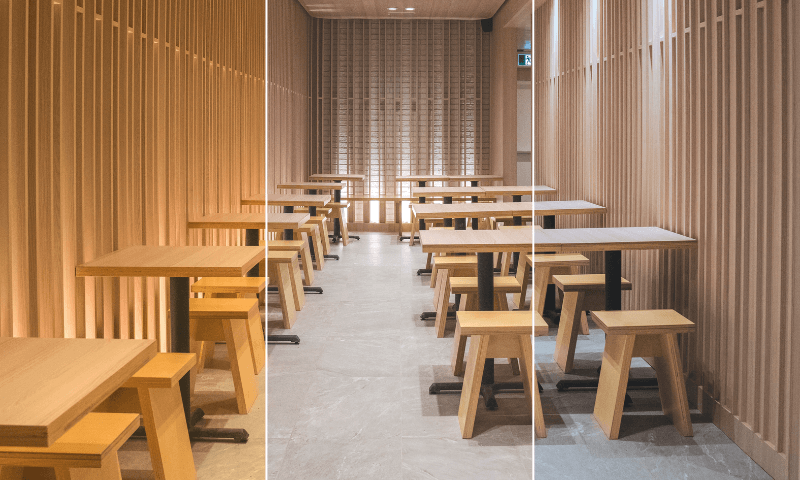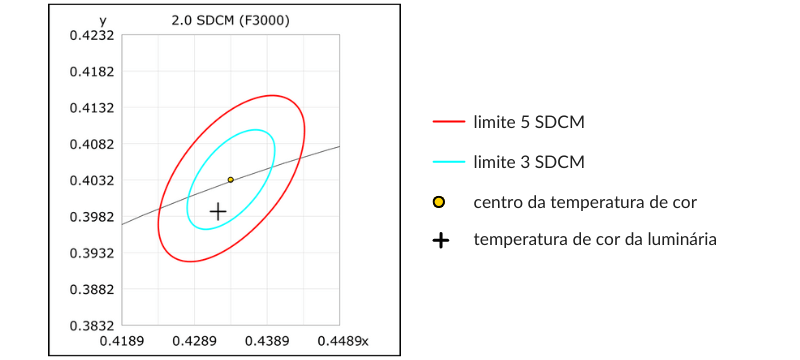The importance of colour temperature in lighting

Table of contents
Colour temperature is one of the fundamental components of good lighting. In addition to the aesthetic and functional aspects, colour temperature also influences the emotional perception of the environment, having an impact on the well-being of the people who frequent the space.
Carelessness in selecting the right colour temperature can have negative consequences, which is why the choice must be carefully considered.
What is colour temperature?
Colour temperature, or CCT - correlated colour temperature - refers to the chromatic appearance of the light emitted by a light source.
Colour temperature is expressed in kelvin (K) and the lower the K number, the warmer the shade; conversely, the higher the kelvin number, the colder it will be.
Low colour temperatures: with values up to 3500K, these lights are perceived as warm, have a more orange or yellowish appearance, and create a cosy and relaxing atmosphere.
High colour temperatures: these lights are considered cool, they have a bluer colour and their values start at 5000K.
Between the warm and cold coloured lights, there are the neutral colour temperatures, with values between 3500 and 5000 K and a white appearance.

A little more technical explanation: colour temperature is based on Planck's Theory, or Planck's Locus, which argues that a black body - a hypothetical object that neither reflects nor is passed through by any light - varies in colour according to its temperature (in kelvin). The colour of a light would then be the same colour as the black body at that temperature.

Planckian locus - black line - on the CIE 1931 colour diagram.
The influence of colour temperature
Colour temperature has a significant impact on the atmosphere of a space. Choosing the right colour temperature can transform a room, making it more welcoming and relaxing or bright and energising, depending on the purpose.
Warm lights: ideal for creating environments that invite relaxation and comfort; warm-toned lighting can be used in living rooms, bedrooms, restaurants and bars.
Neutral lights: white lighting that favours environments where tasks that require good visualisation and concentration are carried out — ex: kitchens and offices —, but also where greater ability to visualise colours and textures accurately is required - such as museums or clothing shops.
Cool lights: ideal for spaces that want to create an energising and stimulating atmosphere.

Warm light, neutral light and cold light
Variations in the appearance of light
Two light sources with the same colour temperature can have a visibly different light tone. Why? Because of differences in the Standard Deviation of Colour Matching (SDCM).
The use of luminaires with a high SDCM value can directly affect the quality and uniformity of lighting, compromising both the beauty and functionality of a space.The SDCM value measures the consistency of the colour emitted by light sources and is based on MacAdam's ellipses
The MacAdam ellipses consist of a graph with several concentric circles, with the central axis at the target colour temperature, where the centre of the light source's colour temperature is then marked. The distance between the centre of the target colour temperature and the centre of the actual colour temperature is then checked: the circle within which the centre of the actual colour temperature lies corresponds to the deviation of the colour match.
The smaller the distance in SDCM, the smaller the deviation in colour matching:
1 SDCM: no visible difference in colour
2 SDCM: the difference in colour can only be detected by measuring instruments
3 SDCM: there are slight inconsistencies in colour that can be visible to the human eye
4+ SDCM: colour deviations are visible to the human eye
Let's look at an example:

Example: 3000K luminaire with 2.0 SDCM deviation
As a reference, 3 SDCM is considered the maximum deviation for indoor environments and 5 SDCM for outdoor environments.
Light sources with low SDCM values show higher quality in the manufacture and quality control of the product, and may be an indicator of the use of higher quality LED components.
Uniform colour temperature is essential to contribute to a pleasant and harmonious environment.
Colour temperature and well-being - Human Centred Lighting
Colour temperature is closely linked to Human Centred Lighting (HCL). This innovative approach to lighting design aims to create healthier and more productive spaces in which to live and work.
This concept arose from the need to reduce the impact of artificial lighting on our circadian rhythm.
Circadian rhythm
Also known as the circadian cycle;
The body's natural rhythm closely linked to the presence of light;
Impacts the processes of hormone secretion, which condition, for example, sleep-wake patterns and body temperature regulation;
In the early days, this relationship was only conditioned by sunlight, which also governed man's activities;
With the introduction of artificial light, the natural link between the sun's cycle and the body's cycle was lost.
With the aim of reducing the negative impacts of artificial lighting and improving our well-being through the management of colour temperature and illuminance levels in indoor environments, Human Centred Lighting was born.
Lighting centred on HCL concepts aims to simulate the impact that sunlight, as an exclusive illumination, would have on our bodies, being able to contribute positively to our sense of well-being, to our mood, and to improve the quality of our sleep by regulating our sleep-wake cycles.
A basic example of lighting based on HCL principles:
When you wake up, a warm colour temperature prepares your body for the new day;
Throughout the morning, the colour temperature rises (becoming cooler) and remains neutral until mid-afternoon, promoting the concentration and energy needed for work;
In the late afternoon, the warmer lighting tones prepare our bodies for sleep, contributing to feelings of calm and tranquillity.

The principles of this lighting that respects our body's natural patterns can be used in a variety of environments, such as offices, schools or hospitals, but it is undoubtedly in residential environments that the potential positive effects of HCL will have the greatest impact, due to its long-term use.
How do you choose the right colour temperature?
The choice of colour temperature must take into account:
The objectives of the space and the desired atmosphere;
The types of activities carried out;
The predominant materials, colours and textures;
The impact that the light may have on the users of the space.
Colour temperature is an essential element in lighting design that should not be underestimated. By understanding what colour temperature is and how it affects atmosphere and well-being, you can create more functional and pleasant spaces
When planning the lighting of a commercial environment, you should bear in mind the enormous importance of colour temperature and how you can use it to create memorable experiences.
Other articles

29/01/2024
Food product lighting

26/03/2024
Human Centric Lighting

23/04/2024
Luminotechnical study

20/01/2024
The Impact of Lighting on Sales

19/04/2024
Lighting products for retail

19/01/2024
Workspace lighting

16/05/2024
What is UGR and GR?

15/03/2024
Advantages of using LED technology

14/10/2024
The impact of lighting on productivity

12/01/2024
Kitchen lighting

Add new comment